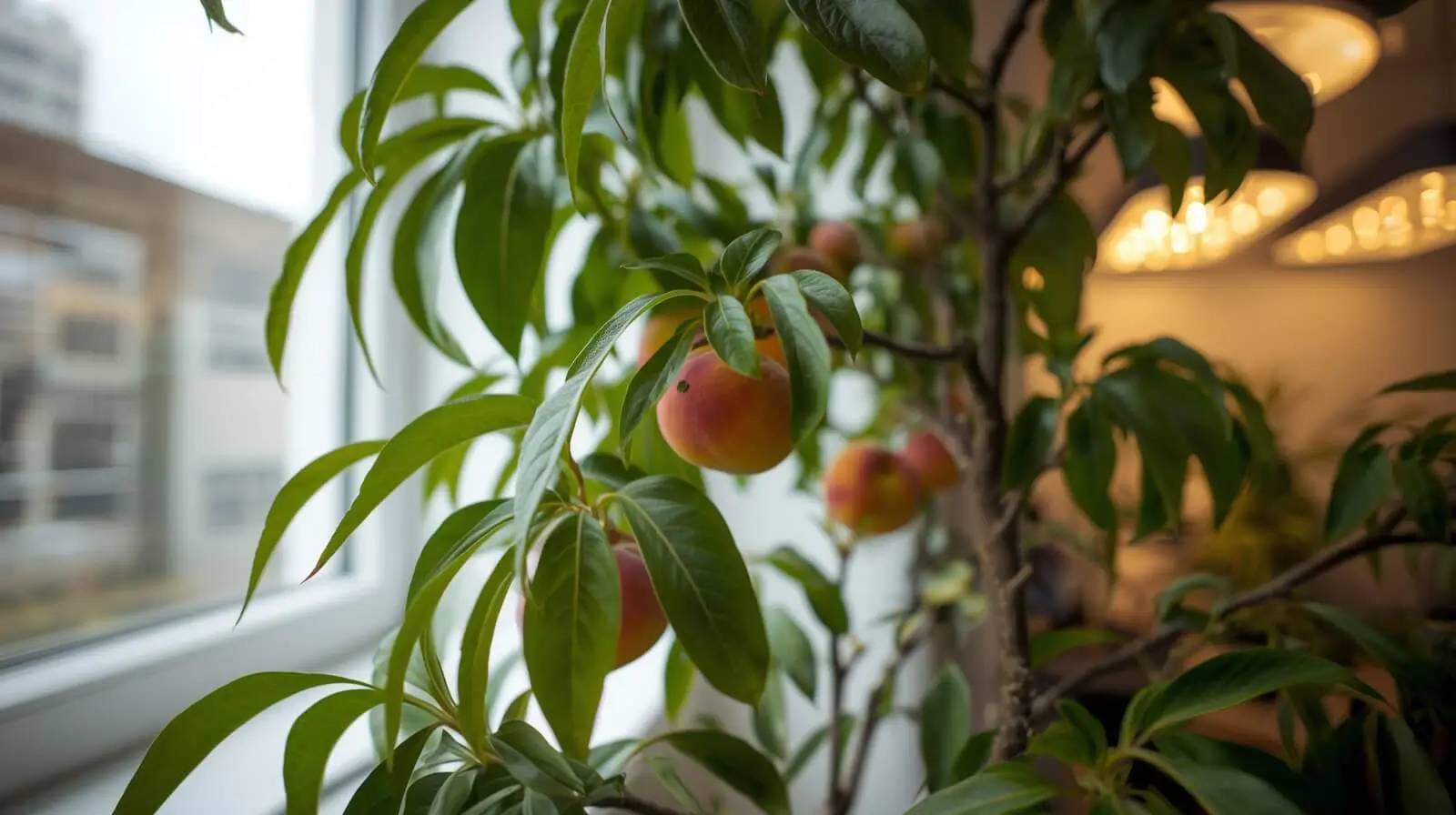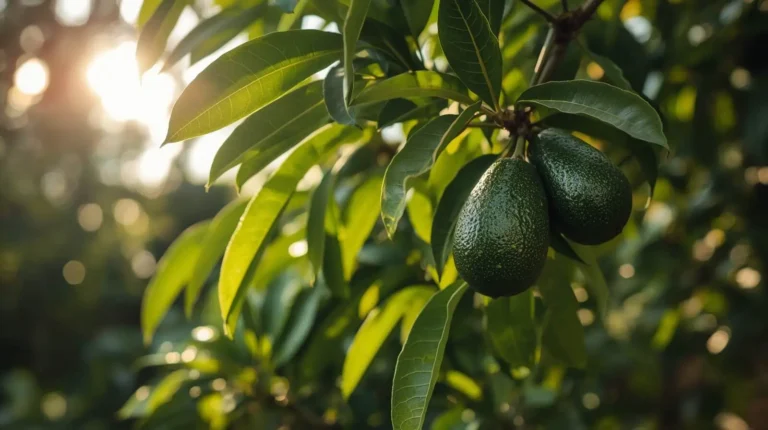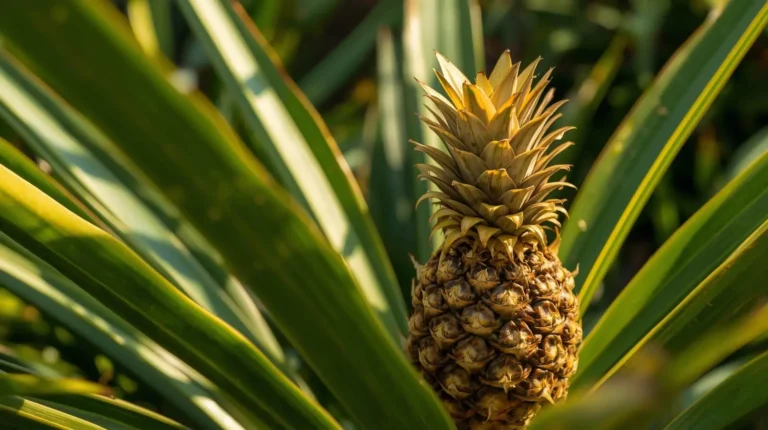Growing a peach tree indoors always feels like a unique opportunity to cultivate your own delicious fruit in the comfort of your home, and I’ve learned that with the right knowledge and steady care, you can truly transform any living space into a tiny mini orchard that gives fresh peaches almost year-round. By building an understanding of the specific conditions these trees need, such as the essential factors like proper light, stable temperature, healthy soil, and balanced watering needs, you set the foundation for real growth. These elements play a crucial role in your overall success with indoor peach cultivation and maintaining an indoor peach tree, and this article helps outline the essential steps that have helped my plants stay thriving as I provide insights from my own journey navigating the common pitfalls that can hinder progress.
- Make sure the light, temperature, and soil stay balanced because they play a crucial role in helping the plant stay thriving.
- Check the watering needs often, as meeting these specific conditions is one of the most essential steps in avoiding issues that may hinder growth.
- Use your knowledge and care to adjust your living space so the tree can transform into a healthy part of your mini orchard and produce fresh peaches.
1. Understand the Basics of Indoor Peach Tree Cultivation
When I first started growing a peach tree indoors, I realized that these plants only thrive when their specific conditions are met. A minimum of 6-8 hours of direct sunlight each day, along with a proper chilling period of 150-500 hours at temperatures between 32°F and 45°F, helps the tree bear fruit. Building an understanding of these requirements is crucial for doing it successfully, especially when selecting the right variety like dwarf or low-chill fruits, which really enhance your chances of success. I also found that knowing the growth habits of the tree is essential, especially when choosing well-draining soil such as clay, sand, loam, chalky, or sandy loam. Consistent care—like consistent watering to maintain moisture levels—helps fruit-bearing varieties settle well in containers that are about 12 inches deep or 5 gallons in size to support growth.
Keeping consistent moisture is vital, so I often water twice a week, especially during dry spells, and this habit of checking soil moisture has helped me avoid issues that proper drainage prevents. When everything works together, an optimal environment forms, leading to a truly fruitful harvest with robust growth and steady fruit production. Using a balanced fertilizer with NPK ratios like 10-10-10 supports the tree even further. In some homes, there’s insufficient natural light, so I rely on grow lights to enhance growth and maintain healthy fruiting, making the whole process much more reliable.
2. Establish Optimal Growing Conditions for Indoor Peaches
When I try to establish the optimal conditions for growing a peach tree indoors, I always start by choosing a location with ample sunlight, and a south-facing window is usually the ideal spot. If the natural light feels insufficient, I often supplement it with grow lights to maintain the right indoor temperatures between 65°F and 75°F during the day, while allowing cooler conditions at night. Keeping the humidity levels around 40-70% helps prevent leaf drop and encourage robust development (For detailed guidelines on growing fruit trees in containers and indoor settings, you can also read the UMass fact sheet on container gardening with fruit trees), and I make it a habit to regularly check the moisture content of the soil so it stays consistently damp but not saturated, which is key for promoting root health. A well-draining potting mix also helps prevent root rot, an important consideration for the tree’s longevity, and I always keep the soil pH close to 6.0-6.5 for stability.
To manage humidity, I like using a hygrometer to monitor levels and keep an eye out for signs of low humidity like brown leaves or dry leaves, especially when conditions shift. I try to provide approximately an inch of water each week, mainly in the initial years, so the plant stays adequately hydrated. This type of consistent care has always supported healthy growth and helped me stay successfully growing indoor peaches that truly thrive in my home environment, even when outdoor conditions aren’t ideal.
If you enjoy growing fruit trees indoors, you may also find this guide on Meyer lemon plant care helpful for managing indoor light, humidity, and overall tree health.
3. Plant Your Peach Tree: Step-by-Step Instructions
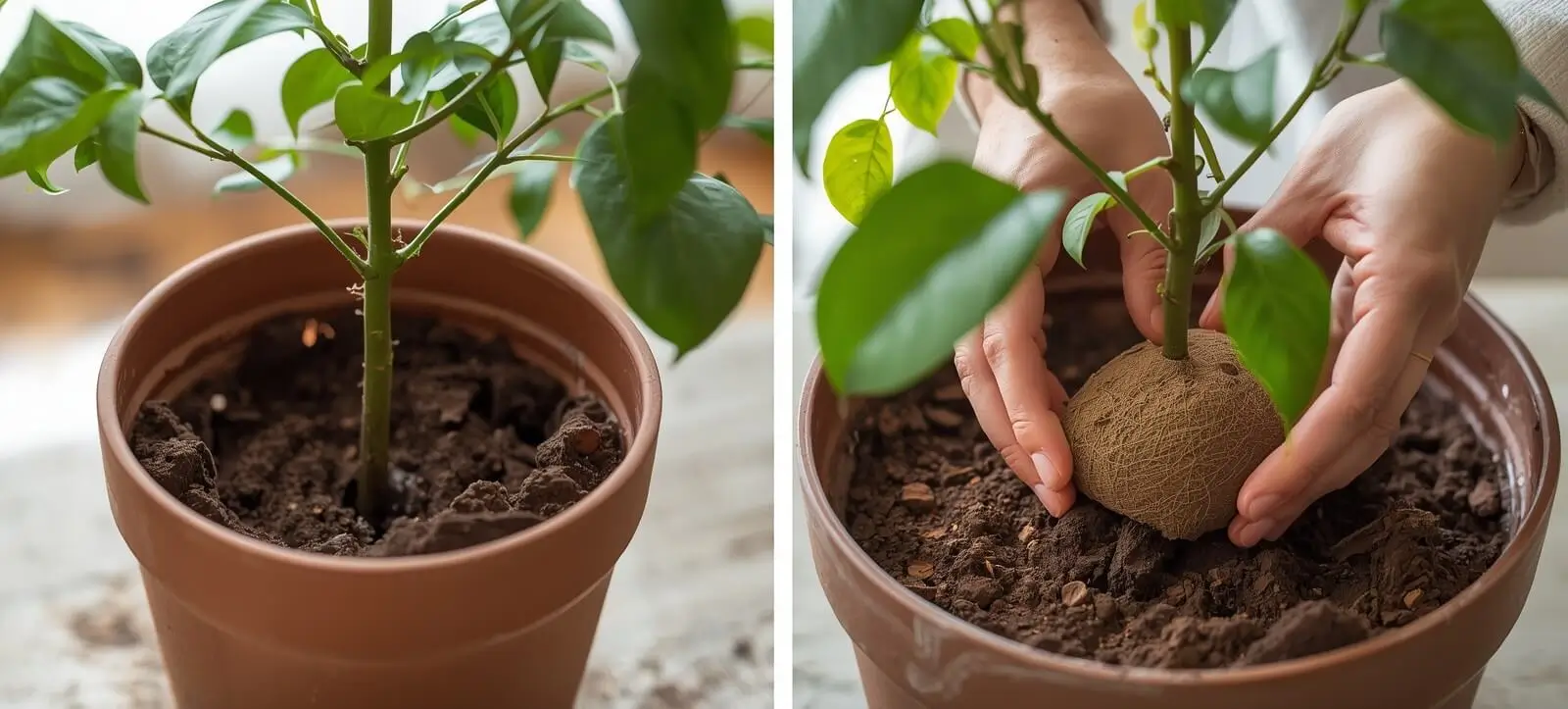
Growing up gardening helped me understand that growing a peach tree indoors becomes much easier when you choose the right container. I always start by selecting a sturdy pot that is 12-18 inches deep with proper drainage holes to support adequate root growth while preventing waterlogging. Before anything else, I prepare the soil by utilizing a high-quality potting mix that offers good drainage, and sometimes I enhance drainage by mixing in perlite or sand to improve aeration and support moisture retention.

- Carefully plant the sapling by gently removing the peach plant from its nursery pot, loosening roots to help the tree settle better.
- Position the plant centrally in the new container, making sure the root ball stays level with the surface of the potting mix.
- Fill in the remaining space with soil, pressing down lightly to eliminate air pockets and secure the plant in place.
- Water thoroughly until liquid drains from the bottom, helping to settle the soil and support container fruit plants.
- Continue watering every 5-7 days in spring and every other day in summer to maintain optimal moisture levels.
- Fertilize by applying fertilizer to newly planted peach plants in March, using liquid fertilizer every few weeks to promote healthy development, encourage fruit production, and provide essential nutrients.
- Position the pot where it receives ample sunlight, such as a south-facing window, or use grow lights when needed to support optimal growth in full sun, with a minimum six to eight hours of direct sunlight each day.

- Track chill hours, especially if growing a specific variety like the Bonanza fruit cultivar, which needs 400 chilling hours for successful fruiting and maintaining overall plant health, and remember to repot the tree every two to three years to prevent root-bound conditions and support continued health, productivity, and help it thrive in its environment.
4. Maintain Your Indoor Peach Tree: Care and Maintenance Tips
Taking care of an indoor peach tree becomes easier when you maintain simple habits that support its growth. I start with watering only when the top inch of soil feels dry, making sure there is adequate drainage to prevent root rot. For young peach plants, giving about 15-20 liters or 4-5 gallons each time they are irrigated works well, and I keep them watered twice a week during dry periods. Mature plants need more, especially when growing a peach tree indoors, sometimes reaching 35-45 gallons daily during peak demand, particularly three weeks prior to harvest. Along with this, I use fertilizing routines such as applying a balanced fertilizer like Stark® Tre-Pep® Fertilizer (priced at $14.99) every 4-6 weeks in the growing season, mainly spring and summer, to supply essential nutrients, since water is vital for optimal plant development and strong fruit production.
- Use pruning to trim yearly, helping the tree preserve form, promote new development, and remove dead branches or diseased branches to protect its overall health using proper pruning techniques that stimulate healthy growth and enhance fruit quality.
- Follow pest management by routinely inspecting the plant for pests like aphids or spider mites, and treat them with insecticidal soap, neem oil, or another natural remedy to manage infestations effectively.
- Track chill hours, especially if your indoor environment has insufficient chill hours; placing the tree in a cooler area during winter helps mimic necessary conditions for dormancy, which is crucial because fruits sensitive to inadequate moisture and temperature changes may struggle.
- Practice moisture monitoring by checking moisture levels to prevent overwatering or underwatering, which protects the health of fruit-bearing plant.
- Add mulching with 2-4 inches of mulch around the tree to conserve soil moisture, helping with maintaining hydration throughout the year.
For more container-friendly indoor fruit plant care, this guide on dwarf red banana tree care offers helpful insights on humidity, watering, and indoor growth practices.
5. Troubleshoot Common Problems in Indoor Peach Tree Growth
When caring for indoor fruiting plants, I’ve learned that several difficulties can affect their well-being and overall output, and most of these common problems can be managed with simple solutions that support successful indoor gardening. A primary cause of leaf drop when growing a peach tree indoors is low humidity, so maintaining humidity levels around 40-60% is essential. If there is insufficient humidity, I use a humidifier, set pebble trays with water, and avoid excessive watering by checking the top inch of soil to ensure it feels dry before watering again. I also find that applying 1-2 inches of compost and mulch helps prevent underwatering issues and improves moisture retention. Another issue is poor fruit production, which often comes from insufficient sunlight or inadequate chill hours that hinder fruit production, so providing 6-8 hours of direct sunlight each day, or adding supplement lighting using grow lights placed 12-18 inches above the plant, becomes crucial. Ensuring the tree receives the necessary chilling period, along with optimal daytime temperatures of 70°F to 80°F and nighttime temperatures of 60°F to 70°F, supports healthy development and fruit set in indoor spaces.
- I often deal with pest infestations by performing regular monitoring for pests like aphids and spider mites, especially when I notice yellowing leaves or reduced growth, and I immediately treat infestations using organic insecticides, natural remedies, or horticultural oil, sometimes even using a strong jet of water to dislodge pests, and I make sure to check weekly to prevent larger outbreaks.

- One of the biggest threats indoors is diseases, especially fungal infections such as fruit leaf curl and brown rot, so I always ensure good air circulation, avoid overhead watering, and act fast when symptoms appear by removing affected leaves and using appropriate fungicides to prevent spread, also keeping an eye out for peach tree rust with yellow spots on leaves that may lead to further leaf drop.
- When I suspect nutrient deficiencies, often shown through yellowing leaves, I check for lack of nitrogen or iron, and apply a balanced fertilizer with a 10-10-10 NPK ratio every 4-6 weeks during the growing season to supply essential nutrients, along with regular soil testing to avoid excessive nitrogen fertilizers, which may create healthy leaves but no fruit.
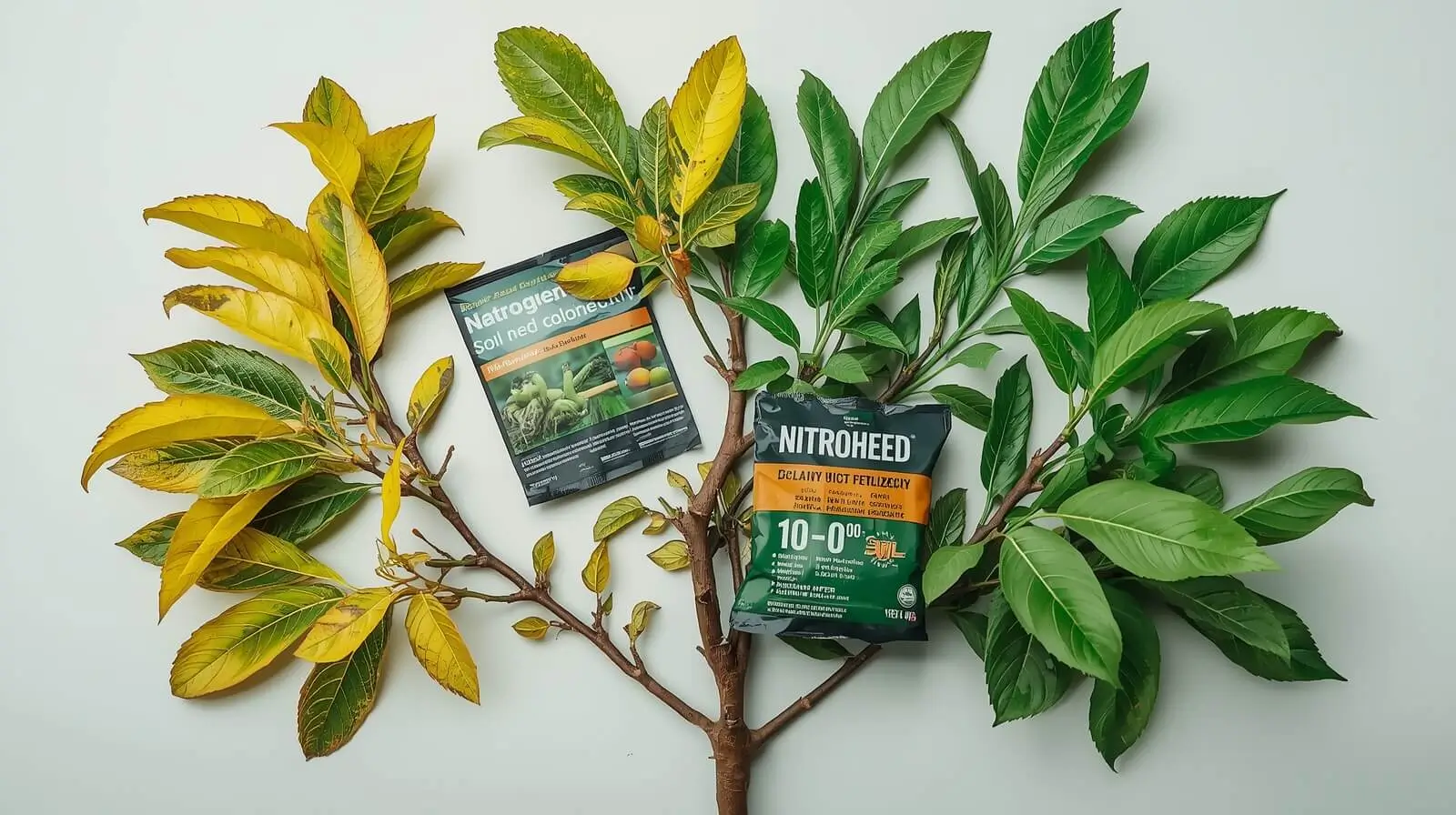
- Finally, staying proactive helps a lot, so I take proactive actions like giving attention to my space as an indoor fruit plant enthusiast, encouraging healthy productive specimens that thrive in home settings, and I always remember that pruning Elberta peach trees in late winter or early spring supports optimal growth and maintains the plant’s structure indoors.
Read Also:
- Gardening & Plant Care Guide for Thriving Plants
- Tropical Fruit Trees: Grow Exotic Paradise at Home (Guide)
Conclusion

Maintaining healthy indoor peaches becomes much easier once you understand the root causes behind common issues like leaf drop, poor fruit production, pest infestations, diseases, and nutrient deficiencies. When you respond quickly—by adjusting humidity, improving sunlight exposure, managing chill hours, strengthening pest control, and balancing nutrients—you support a peach tree that grows with stability and confidence. For many indoor gardeners, the goal isn’t only fruit; it’s about creating healthy productive specimens that thrive in their home settings with consistent, proactive care. By following these practical steps, your indoor peach tree can continue its journey toward strong growth and dependable fruiting.
FAQs
1. Why is my indoor peach tree dropping leaves?
Leaf drop is commonly caused by low humidity, excessive watering, or inadequate moisture control. Keep humidity between 40–60%, ensure the top inch of soil feels dry before watering again, and avoid soggy soil to prevent root stress.
2. How many hours of sunlight does an indoor peach tree need?
Indoor peach trees need 6–8 hours of direct sunlight each day. If your home has insufficient sunlight, place grow lights 12–18 inches above the plant to maintain healthy development.
3. What temperature is best for indoor peach trees?
For proper growth, maintain daytime temperatures of 70°F–80°F and nighttime temperatures of 60°F–70°F. These levels support fruit set and reduce stress on the plant.
4. How do I control pests like aphids and spider mites indoors?
Use organic insecticides, horticultural oil, neem oil, or even a strong jet of water to dislodge pests. Check the plant weekly to catch pests early before they spread.
5. Why is my peach tree not producing fruit indoors?
Indoor trees often fail to fruit due to insufficient sunlight, inadequate chill hours, or excessive nitrogen fertilizers. Provide proper lighting, ensure required chilling periods, and use a balanced fertilizer (10-10-10) during the growing season.
6. How can I prevent fungal diseases like leaf curl or brown rot?
Improve air circulation, avoid overhead watering, and remove infected leaves as soon as symptoms appear. Apply appropriate fungicides to prevent further spread.
7. What should I do if my peach tree looks healthy but isn’t fruiting?
This may indicate excessive nitrogen fertilizers. Switch to a balanced formula and ensure the tree gets enough light, chill hours, and regular seasonal care.
8. When should I prune my indoor peach tree?
Prune in late winter or early spring, especially for varieties like the Elberta peach, to maintain structure and encourage optimal growth.

